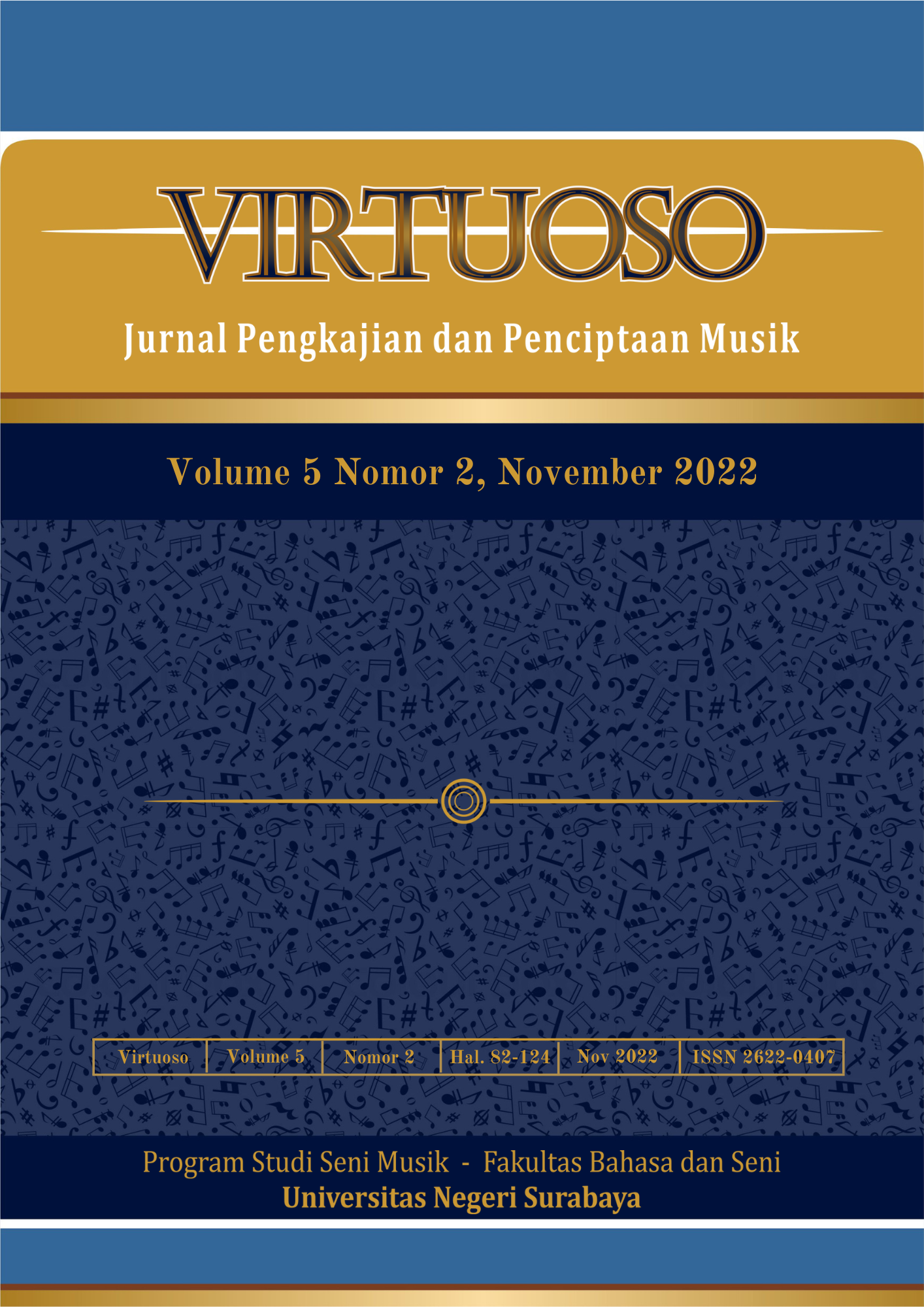Metode Tikitiki Dalam Pembelajaran Perkusi Drum Band Pare Kediri
Main Article Content
Abstract
Downloads
Article Details

This work is licensed under a Creative Commons Attribution-NonCommercial-ShareAlike 4.0 International License.
The copyright of the received article once accepted for publication shall be assigned to the journal as the publisher of the journal. The intended copyright includes the right to publish the article in various forms (including reprints). The journal maintains the publishing rights to the published articles.
References
Banoe, P. (2013). Metode Kelas Musik. Pt.Indeks.
Farida, S., & Munib, M. (2020). Sinergi Sekolah dan Masyarakat dalam Pengelolaan Ekstra Kurikuler di SMP Islam Nurudz Dholam Kedungdung Sampang. Widya Balina, 5(1). https://doi.org/10.53958/wb.v5i1.53
Ferris, J., & Worster, L. (2013). Music: The art of listening. McGraw-Hill Higher Education.
Forney, K., & Machlis, J. (2011). The Enjoyment of Music. An Introduction to Perceptive Listening. In Shorter. Nueva York: W&W Norton.
Hermawan, M. S. (2020). Marching Band sebagai Pendidikan Berkarakter: Sebuah Solusi Komprehensif Pendidikan Non-Formal Bagi Remaja. Victoria University of Wellington, New Zealand.
Hughes Jr, R. F. (2020). Relationships between the rhythm sight-reading strategies and sensory learning styles of Florida all-state musicians: a verbal protocol analysis. Boston University.
Jones, S., & Featherly, K. (2012). Digital Music. In Encyclopedia of New Medi. https://doi.org/https://doi.org/10.4135/9781412950657.n73
Mariyaningsih, N., & Hidayati, M. (2018). Bukan Kelas Biasa: Teori dan Praktik Berbagai Model dan Metode Pembelajaran Menerapkan Inovasi Pembelajaran di Kelas-kelas inspiratif. CV Kekata Group.
Prof. Dr. Yusuf, A. M. (2017). Metode Penelitian Kuantitatif, Kualitatif & Penelitian Gabungan. Kencana, 480.
Roberts, A. (2015). Vines of oppression: a review of the literature, educational criticism and narrative analysis of social media research in public education.

